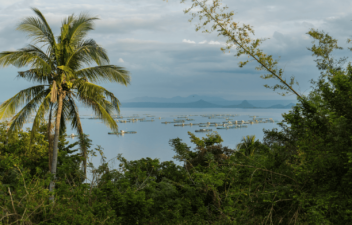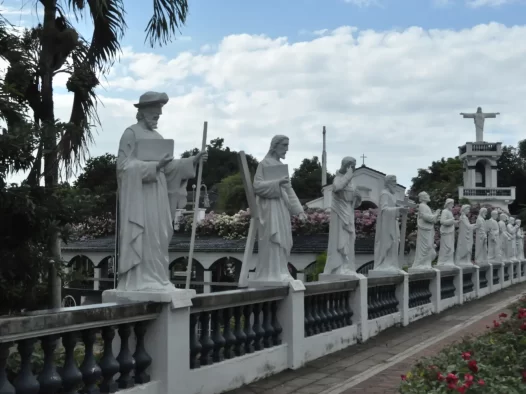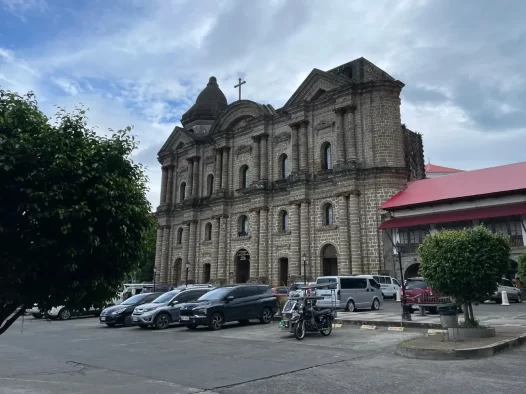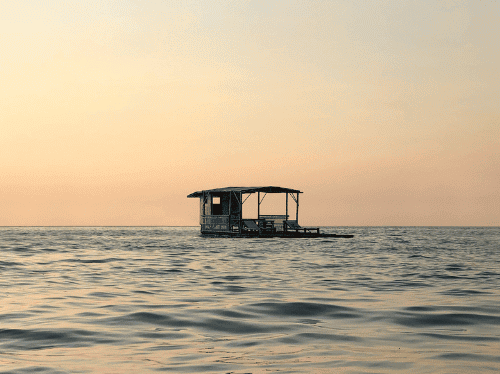Mataasnakahoy
Located in the central region of Batangas Province, Mataasnakahoy is a charming town that sits on the southern edge of the scenic Batangas Plateau. Blessed with a temperate climate and abundant rainfall, this idyllic location fosters the perfect conditions for thriving agriculture. Despite its modest size, Mataasnakahoy proudly holds the top spot in coffee and lanzones production within the province, with only San Juan surpassing it in coconut production.
This tranquil and progressive agricultural community, much like its neighboring towns, is rich in historical and cultural heritage. Covering an area of approximately 2,376 hectares, Mataasnakahoy was carved out from the northwestern region of the former Municipality of Lipa. The town’s geographical shape resembles that of a triangle, with one side hugging the picturesque shoreline of Taal Lake. Throughout the region, rolling hills dominate the landscape, adding to its scenic allure. Among the hilly terrain, there is one corner that stands out as flat, serving as the vibrant hub of the town known as the poblacion.
Mataasnakahoy invites visitors to explore its serene beauty, experience its agricultural traditions, and immerse themselves in its vibrant local culture. The town’s picturesque landscapes, coupled with its warm and welcoming community, make it a delightful destination for those seeking a peaceful getaway or a glimpse into rural life in Batangas.
History and Heritage
In 1862, the leader of Lipa town summoned leaders from different settlements to a meeting with an important objective in mind. The purpose was to designate these inhabited villages as barrios and assign names to them, following the tradition of Lipa town, which got its name from a specific tree.
During the meeting, the leader turned to the head of the village now known as Mataasnakahoy and asked for a suitable name. The village head recalled the presence of a tall tree in their village and proposed the name Mataasnakahoy, which translates to “high tree” in English. This suggestion resonated with the attendees, and Mataasnakahoy became the official name of this location.
The bill to establish the township of Mataasnakahoy was approved by Vice-Governor Butte on March 30, 1931. Subsequently, on January 2, 1932, the township was officially inaugurated and recognized as a municipality. The realization of Mataasnakahoy as a separate municipality was made possible by the efforts of dedicated individuals who believed in the community’s growth. Mr. Antonio Mandigma, Mr. Victor Templo, Mr. Agapito Templo, Mr. Casiano Silva, and Mr. Candido Recinto were among those who generously contributed their personal finances, time, and hard work to bring the township of Mataasnakahoy into existence.
The name “Mataasnakahoy” had already been officially recognized as a barrio of the Municipality of Lipa in 1878. As per the Executive Order, the newly established municipality would encompass all the territories of the two barrios, Calingatan and Mataasnakahoy. This marked an important milestone in the history of Mataasnakahoy, solidifying its identity as a distinct and independent municipality within the province of Batangas.
Throughout the years, Mataasnakahoy has continued to grow and develop, preserving its rich history and cultural heritage. The name Mataasnakahoy serves as a reminder of the village’s origins, rooted in the presence of a majestic tree that stood tall and proud, symbolizing the strength and resilience of its people.
Climate
The rainy season starts in June and ends in November. When December comes, the people experienced a very cool dawn. The summer season on the month of March to the end of May.
If you prefer a hassle-free trip, you can rent a car or hire a private vehicle for more convenience and flexibility. Public transportation, such as buses and jeepneys, is also available and can be a more budget-friendly option.
Batangas: Where history, beauty, and resilience converge, creating a tapestry of captivating stories and unforgettable moments.
Coco Festival
The Coco Festival of Mataasnakahoy, Batangas is a vibrant celebration that pays homage to the town’s rich coconut industry and cultural heritage. Held annually, this festival showcases the significance of coconuts in the local economy and showcases the diverse talents and creativity of the residents. During the Coco Festival, the streets come alive with colorful parades, street dances, and various competitions that highlight the versatility and abundance of coconuts in Mataasnakahoy. Visitors can witness captivating performances, adorned with intricate coconut-themed costumes and props, as participants showcase their skills in music, dance, and visual arts.

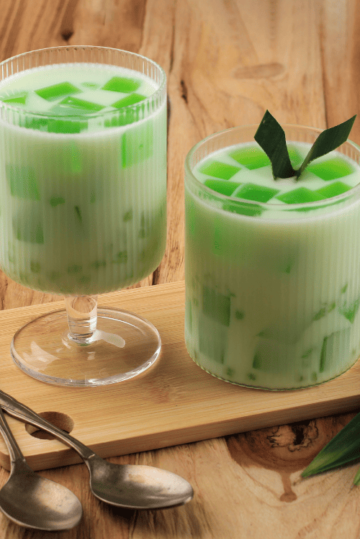
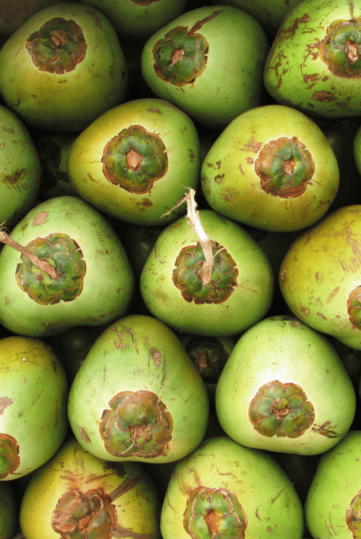
Local Attractions
Batangas in the Philippines offers a range of local attractions that cater to various interests. These are just a few of the attractions you can explore in Batangas. Whether you’re interested in history, nature, or relaxation, the city offers something for everyone.
Getting Around

Buses
Buses provide transportation for longer distances, connecting Batangas with other regions and provinces. These buses have designated terminals and offer a more comfortable option for longer journeys.

Jeepneys
Jeepneys are a staple mode of public transportation in the Philippines. They are colorful, elongated jeeps that can carry multiple passengers. Jeepneys follow specific routes and have fixed fares.
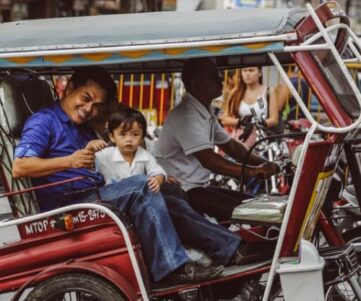
Tricycles
These motorized vehicles consist of a motorcycle with a sidecar, which can accommodate around 3 to 4 passengers. Tricycles are commonly used for short trips within the city, and fares are usually negotiable.
